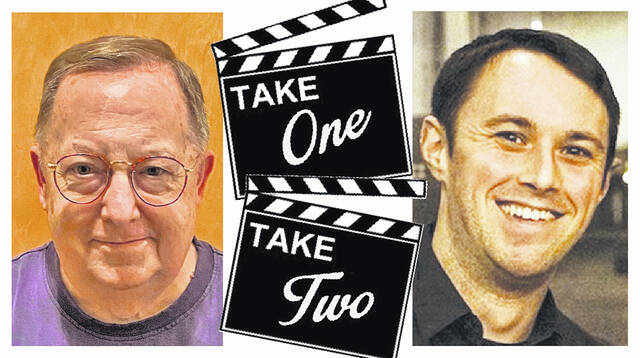
“We need ghost stories because we, in fact, are the ghosts.” – Stephen King
In 1898, Henry James’ landmark novella “The Turn of the Screw” terrified readers with a Gothic setting, supernatural overtones and a spine-tingling image of a dead man in a high window. Conveniently published at the same time as the onset of silent motion pictures, James’ influence looms large over the century-plus countless horror films that we’re all familiar with in the Halloween season.
Take One
In the silent and early talkie years, creepy tales abounded, with many actors being typecast into the roles for which we now identify the genre: Lon Chaney, Bela Lugosi and Boris Karloff. But while the American studios produced stars with storied careers, one determined Swede pulled a full-on Orson Welles: he wrote, acted in, and directed a now-legendary horror film called “The Phantom Carriage” in 1921. That man was Victor Sjöström, and his work touched off the genre in Europe. The plot of the film bears a close resemblance to Charles Dickens’ classic “A Christmas Story.” A ghostly carriage driver — an incarnation of death — invites Sjöström on a terrifying ride through his past and its consequences. The film is a technical marvel, featuring dense superimposition effects that are still in use today.
The horror equivalent of a “quiet gem,” Alejandro Amenábar’s 2001 chiller, “The Others” is often overlooked in more serious conversations about the genre. Almenabár’s film is about a matriarch and her children who find themselves living in the English countryside. Her children are afflicted with a rare disease that makes their eyes hypersensitive to light, and most of the film takes place in the darker corners of a labyrinthine mansion. What follows is textbook horror tension, held together by an exceptional performance from Nicole Kidman: a fully realized psychological and emotional characterization. Capitalizing on the stately visual elegance of M. Night Shyamalan’s blockbuster, “The Sixth Sense,” “The Others” went on to become a phenomenon of its own, but attention for the film has wrongfully faded in the years since.
David Lowery’s 2017 magnum opus, “A Ghost Story,” has barely any horror tropes to capitalize on, with the rare exception that one of its two stars, Casey Affleck, is killed in the first minutes of the film. Thankfully, he relinquishes the rest of the picture to the extraordinary hands of Rooney Mara, who lives years and years with his presence beside her (in a wry turn, Affleck spends the rest of the film looming as a caricature of a ghost, covered by a blank white sheet). If it all sounds too ridiculous to be scary, that’s because it is. But in the absence of chills, the film draws on a much deeper fear — what does it mean to be dead and witnessing the world around you for the rest of eternity? An unbelievable turn of the genre that will spare your nerves but devastate your heart.
Take Two
William Castle was a low-rent Hollywood producer who specialized in horror films in the late ’50s and early ’60s that featured outrageous gimmicks in the theaters they were playing. His 1958 classic “Macabre” was shot in two weeks for $90,000 and grossed $5 million. To hook his audience, he hired actresses to dress as nurses in the theater lobbies and parked funeral hearses outside the theater entrances. Each patron was given a certificate for a $1,000 life insurance policy, from Lloyds of London, in case they were scared to death during the movie.
My two favorite Castle ghost story films are “House on Haunted Hill” (1959) and “13 Ghosts”(1960). For “House,” starring the master of horror Vincent Price, Castle installed, in theaters, a skeleton, with red lights for eyes, hanging from wires on the theater ceiling and flying about at key moments in the film. As a 9-year-old, I actually experienced this effect, called “Emergo,” in the Valentine theater in Defiance. The movie’s premise concerned a group of people hoping to collect a $10,000 fee if they successfully survive a single night in the haunted mansion.
For “13 Ghosts,” Castle created “Illusion-O,” consisting of a pair of glasses with red and blue lenses. When you looked through the red lenses you could see the ghosts on the screen and if you used the blue lenses the ghosts were invisible. Castle got the idea from the red/blue lenses used in 3D glasses in the early ’50s. Each of the 13 ghosts came with a horrifying backstory.
(This column is written jointly by a baby boomer, Denny Parish, and a millennial, Carson Parish, who also happen to be father and son.)

